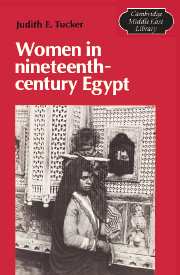Book contents
- Frontmatter
- Contents
- List of illustrations
- Acknowledgments
- List of abbreviations
- Note on transliteration and dates
- Introduction
- 1 Ploughs and shares: women, agricultural production, and property
- 2 Spindles and songs: women in urban occupations
- 3 Private and public life: women and the growth of the State
- 4 Women, resistance, and repression
- 5 The practice of slavery: women as property
- Conclusion
- Appendix: The court records, overview and sample
- Notes
- Glossary
- Bibliography
- Index
2 - Spindles and songs: women in urban occupations
Published online by Cambridge University Press: 28 October 2009
- Frontmatter
- Contents
- List of illustrations
- Acknowledgments
- List of abbreviations
- Note on transliteration and dates
- Introduction
- 1 Ploughs and shares: women, agricultural production, and property
- 2 Spindles and songs: women in urban occupations
- 3 Private and public life: women and the growth of the State
- 4 Women, resistance, and repression
- 5 The practice of slavery: women as property
- Conclusion
- Appendix: The court records, overview and sample
- Notes
- Glossary
- Bibliography
- Index
Summary
They married off the beggarwoman to reform her, so she hid the bread on the shelf and said: “Oh mistress, do a good deed” [i.e. returned to begging].
Egyptian proverb (Taymūr, 998, p. 169)Had it not been for chiseling and sawing, women would have learned carpentry.
Egyptian proverb (Taymūr, 2571, p. 429)The economic contributions of nineteenth century Egyptian women were by no means confined to agricultural labor; over the course of the century, women worked as petty traders and merchants, as craftswomen, as industrial wage laborers, as property and business managers, and as service workers. Unlike female labor in the agricultural sector, which was usually performed on familyheld land, women in trade, crafts, industry, and service usually worked on the margins of the family unit of production. Their labor did not generally form part of a family-based enterprise, and the tools of their trade were, very likely, their own personal property. Such women could undoubtedly aspire to more independence than the peasant woman tied to a family plot, but, as in the peasant family, their independence in the sphere of economic production did not necessarily always loosen the family bonds of shared consumption. Still, as we shall see below, women with direct and individual links to the market economy could elude, to varying degrees, some of the more stringent forms of family control.
The distinction between the peasant woman and her sister in trade and crafts should not, however, be too finely drawn.
- Type
- Chapter
- Information
- Women in Nineteenth-Century Egypt , pp. 64 - 101Publisher: Cambridge University PressPrint publication year: 1985



